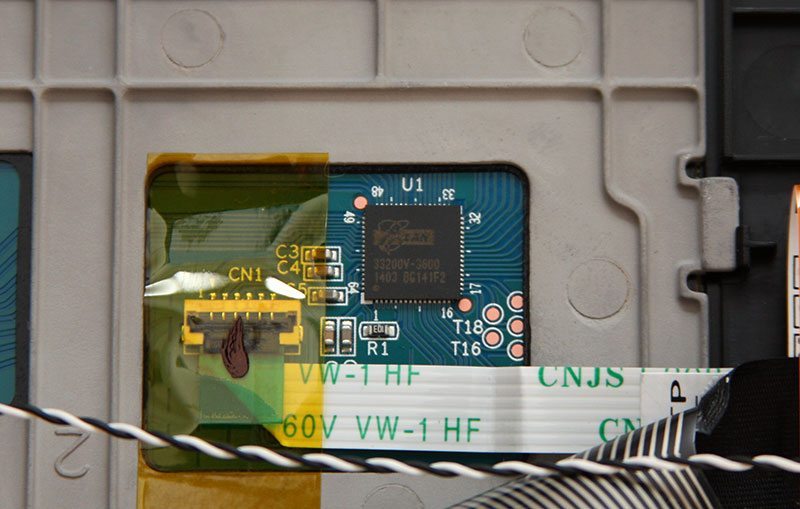MSI GS60-2PE ‘Ghost Pro’ Gaming Notebook Review
Chris Hadley / 10 years ago
A Closer Look – Inside
Looking around the outside of the GS60 only gives us a cosmetic view on what the system has to offer. Lifting off the underside of the notebook we can instantly see that no space has gone to waste; the system components and the battery spread out to every corner as much as much as they can. This design principle is what helps to make the Ghost Pro a compact, yet powerful gaming notebook.
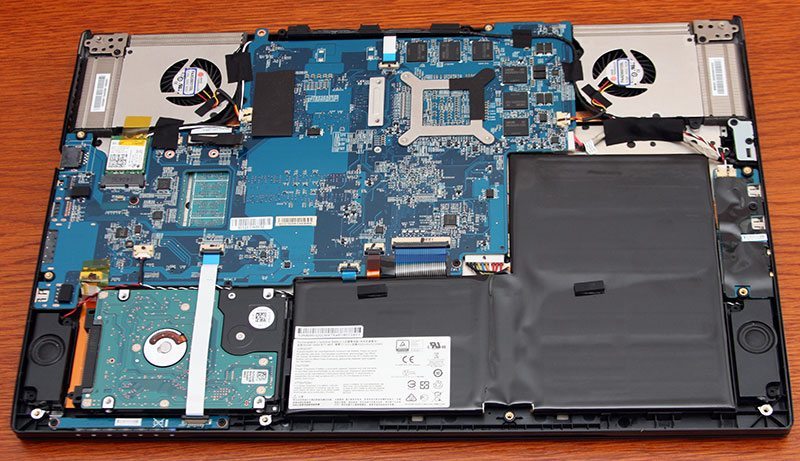
One of the GS60’s larger components comes in the form of a 1TB 5400RPM hard drive from HGST. The ribbon running over the top of the drive (as we see it) links the motherboard to the system status LEDs which can be seen at the bottom of the image.. To the left of the drive is the first of four speakers that are placed around the system.
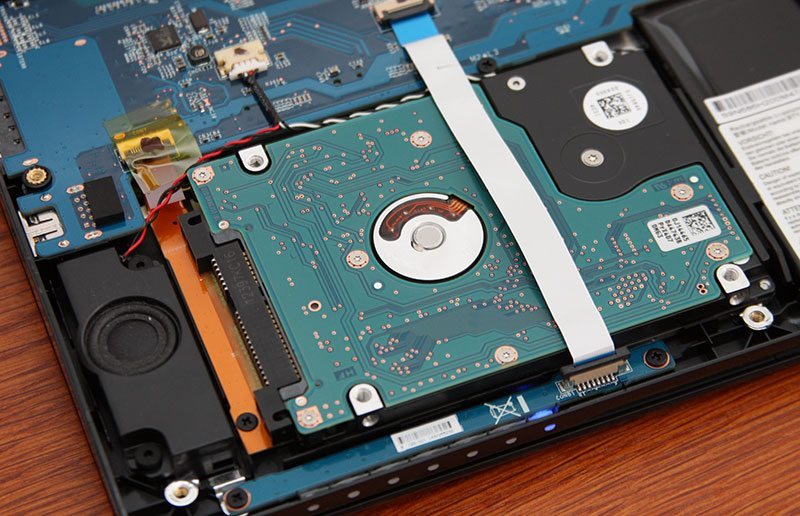
Towards the back of the system, between the hard drive and one of the two coolers is the mini PCI-express wireless card. Although the wired network connection is handled by a KillerNIC chipset, the wireless has more of an OEM feel to it, with Intel’s dual band AC 7260 card employed for the task.
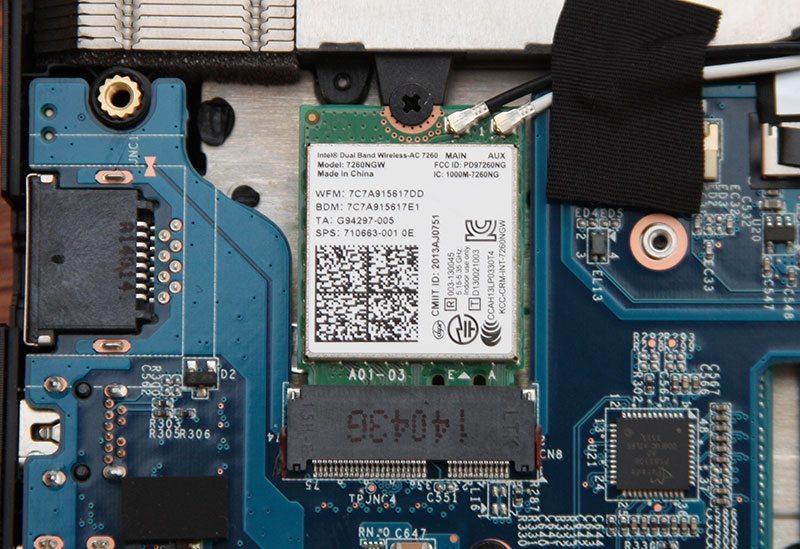
Right round on the rear side of the notebook are two more Dynaudio speakers which break away from the typical dual-speaker setup that we are used to seeing in a notebook. These additional two speakers are intended to add an audio backfill to the Realtek audio output for a more theatrical output effect, although I have not personally felt that these make much difference over just the two speakers at the front of the notebook.
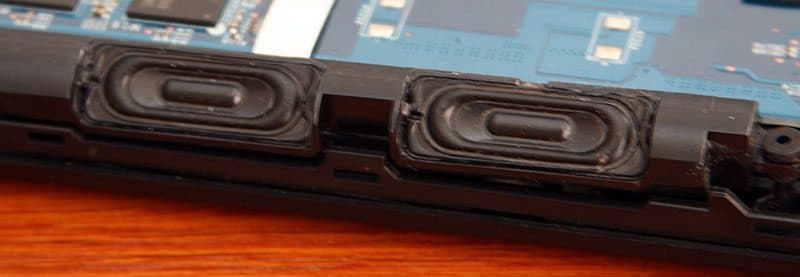
To either side of the notebook in each back corner is a pair of heatsinks with a blower fan for cooling the graphics card and the processor, having the two core components cooled with totally separate heatsinks and fans allows for better thermal performance and ultimately better graphical and processing performance on the front end of the system.
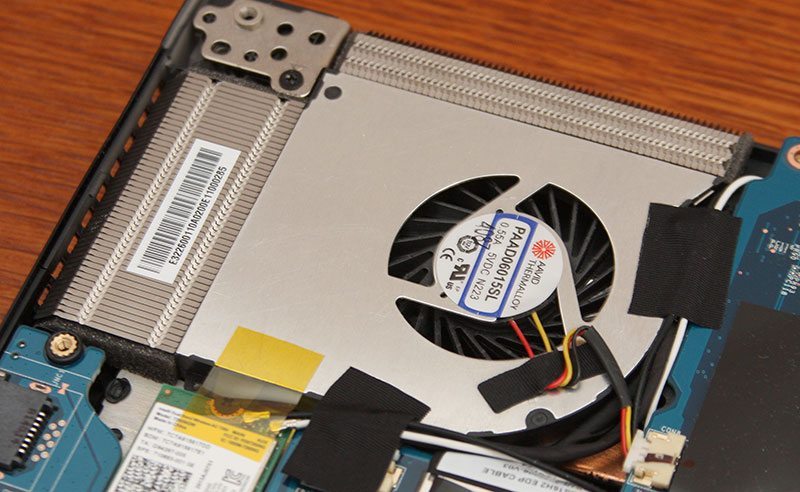
In addition to having separate heatsinks, the orientation of the two blower fans has also be altered. Traditionally, a notebook’s blower fan draws air in from underneath the chassis and blows it back out the side and/or rear as it passes through the heatsink; the GS60 however has the fans mounted the other way up, drawing air in through the top of the system, through the grille that sits between the keyboard and the display.
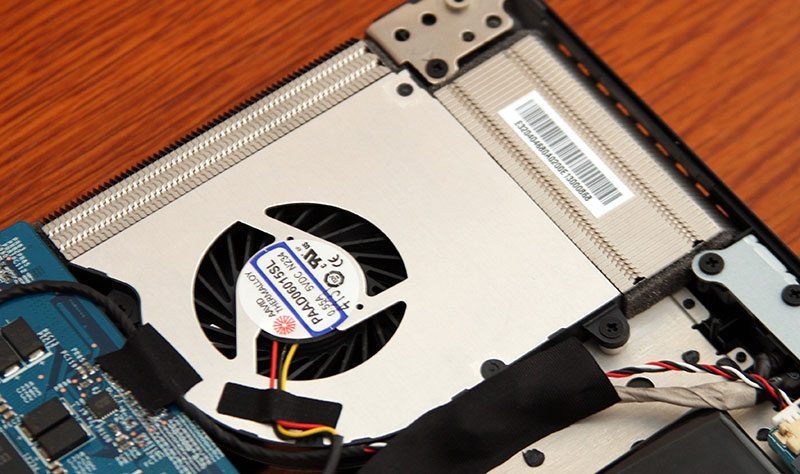
In addition to having a very thin profile, the GS60’s battery is also very slim. Taking up a fair area of the internal void, the GS60 features a 6-cell 4840mAh battery and due to the build-up of the chassis, this is not a user replaceable part.
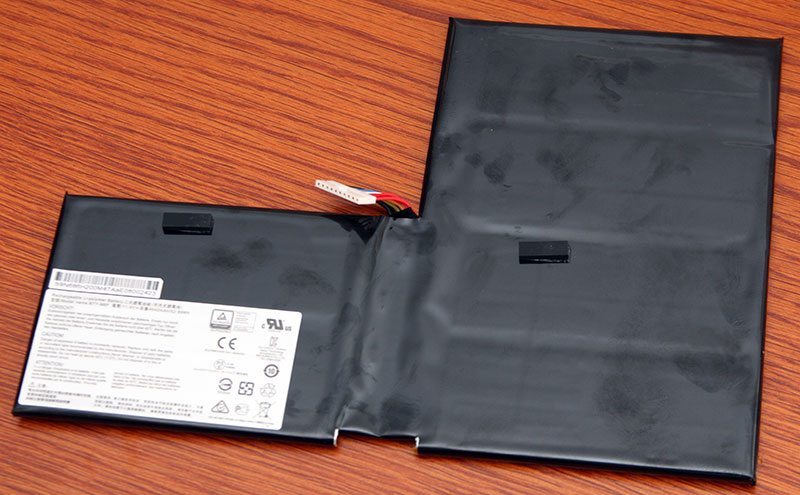
Its only when we look at the battery from the side that we can start to appreciate just how slim all the components are inside the notebook. The heatsinks and the hard drive are typically the thickest components that we would find and even then they are not the thick at all.

Disconnecting the motherboard from all of the ancillary components and lifting it out we can first of all get a glimpse at the two separate cooling solutions that MSI have developed to keep the GPU and GPU cool.
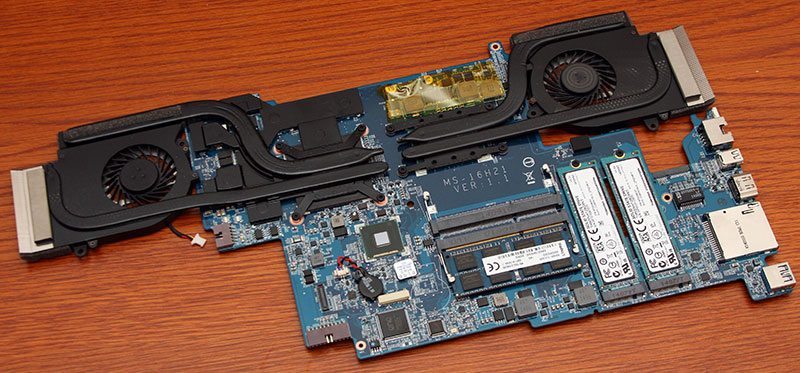
Whilst the CPU cooling system use two heatpipes that run directly from the chip to the two heatsinks, the GPU setup is a little more enlarged, spreading out to the surrounding areas where a series of thermal pads are positioned to cool the VRAM and MOSFETs.
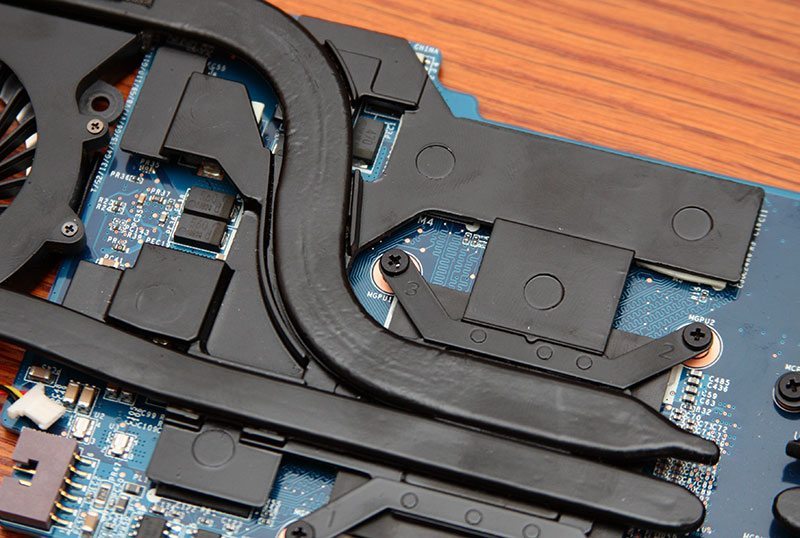
Lifting the heatsink off the motherboard we find two banks of three Samsung branded VRAM packages which make up part of the Ghost Pro’s 3GB graphics memory. Tucked up in the corner of the motherboard (and just out of shot in the image below) are the power delivery components for the 870m core.
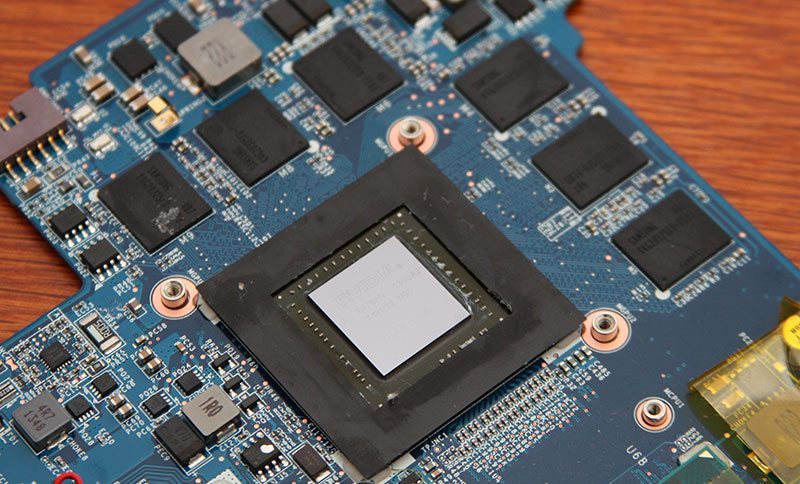
On the other side of the PCB are an additional six VRAM packages which, alongside those on the top of the motherboard, make up the remainder of the 870m’s VRAM. Unlike the packages on the top of the motherboard, these chips do not have any contact with the systems cooling systems and are left to their own devices to cool passively.
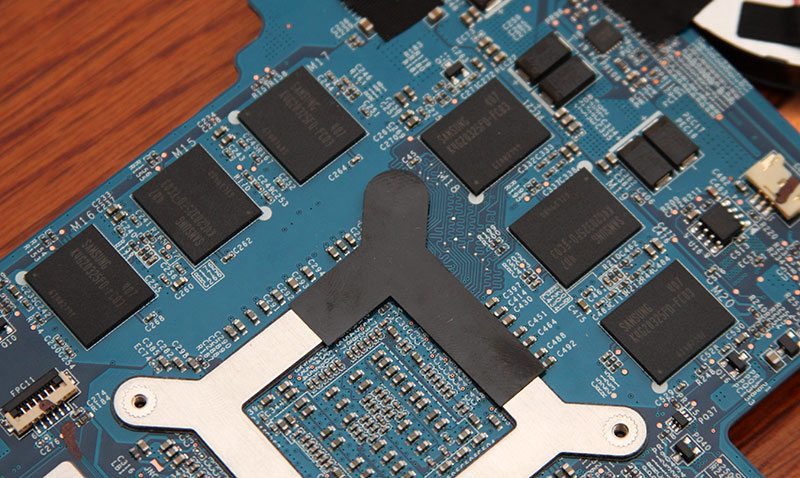
Looking at the sole component that we can here to feast our eyes upon, NVIDIA’s GTX 870m GPU packs 1344 CUDA cores, a clock speed of 941Mz and either 3 or 6GB of memory running on a 192-bit interface. Over the 700m series chips, the 800m series GPUs on paper are set to offer up a performance gain of around 10% plus support for NVIDIAs latest battery boost technology to offer up to twice the battery life whilst gaming at over 30fps.
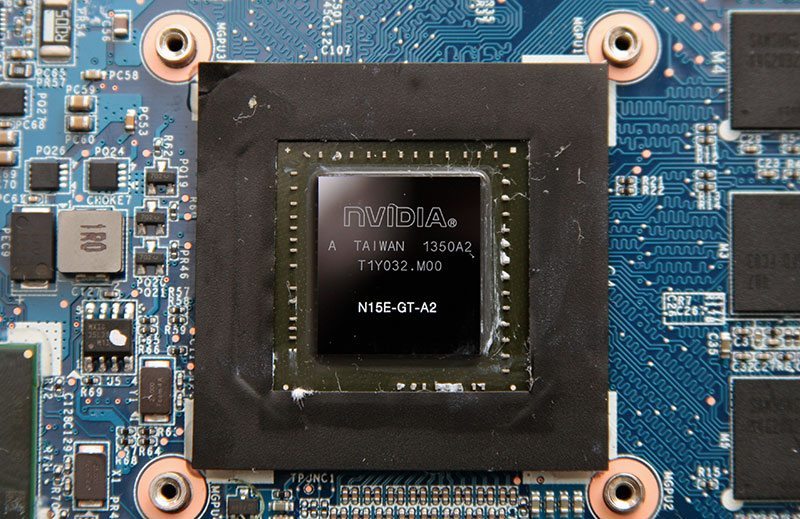
On the other side of the motherboard we find the Haswell based i7-4700HQ CPU. Launched around this time last year, the 4700HP is one of Intel’s top line mobile chips for this market, with a quad-core, eight thread layout running at a core clock speed of 2.4GHz, boosting to 3.4GHz. Additionally the 4700HQ features Intel’s HD 4600 graphics processor which works with NVIDIAs Optimus enabled GPU to optimise the power consumption of the laptop where possible. The yellow film over the chokes etc is there simply to prevent any accidental shortages between components when the system is fully built.
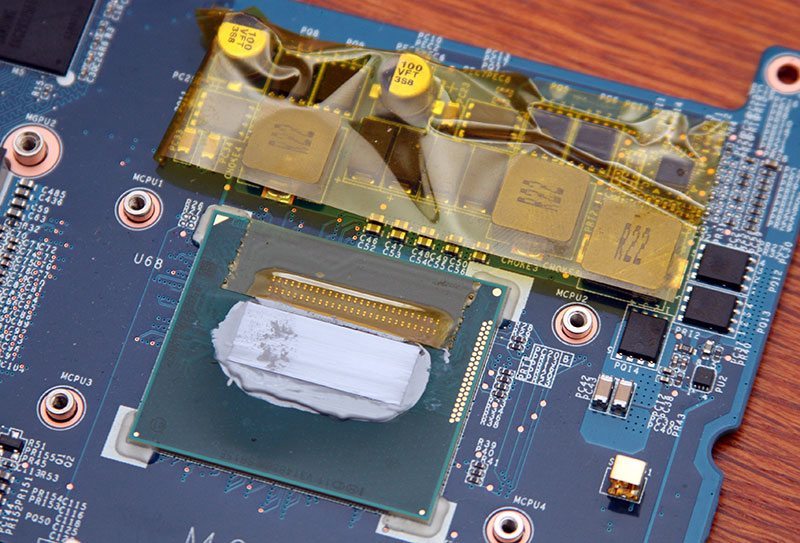
Whilst M.2 SSDs are now a common place on the latest generation of Z97 motherboards, notebooks have been using this form factor for a little whilst longer and the GS60 is no exception. One of the features that sets MSI’s notebooks apart from the competition is their SuperRAID drive setup, which consists of two or three mSATA or M.2 SSDs in a RAID0 configuration to offer superior read and write performance on the boot drive.
In the Ghost Pro we find two Toshiba THNSNH128G8NT M.2 SSDs, each with a maximum read and write speed of 482MB/s and 471MB/s respectively, with up to 80k IOPS. built into a full length form factor, each of the drives is 80mm long and consume around 3W of power each.
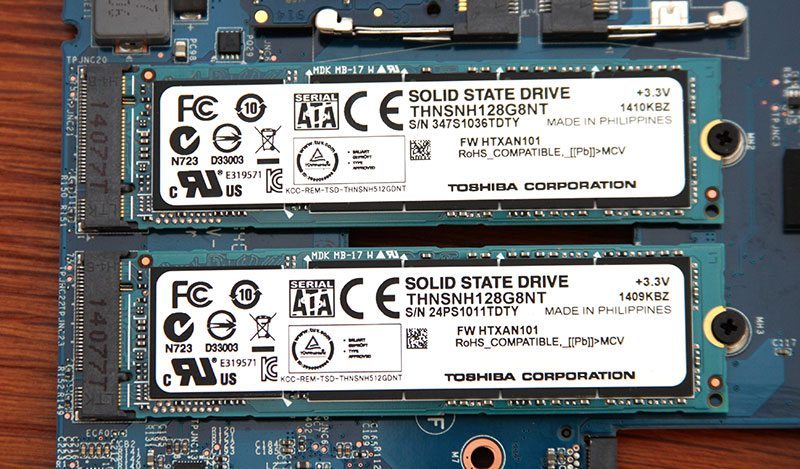
Memory wise the Ghost Pro ships with 8GB of RAM made up of a single Kingston MSI16D3LS1KBG DDR3 1600MHz SODIMM, with support for up to a maximum of 16GB RAM. The memory used here is OEM built, meaning it won’t be available on the consumer market, although it is very similar to the 8GB 1600MHz ValueRAM kits that Kingston have to offer.
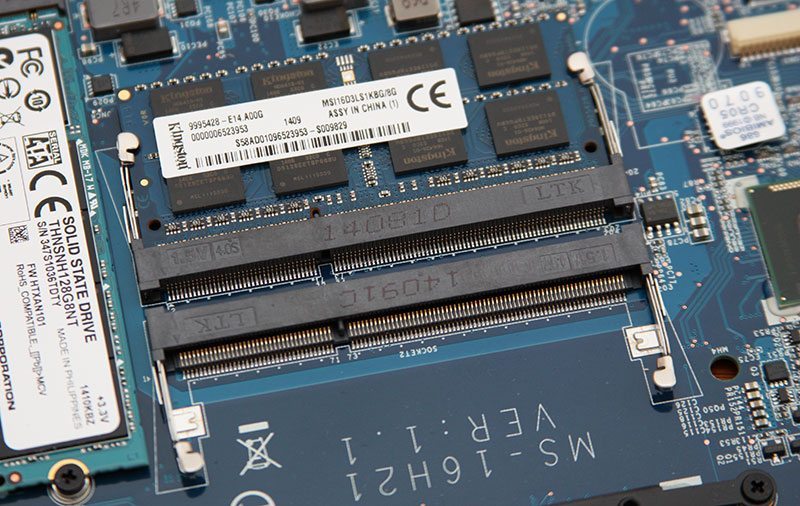
As we saw above, the WLAN is handled by an Intel wireless adaptor, but MSI are proud to boast that all of their latest gaming notebooks offer up Killer NIC LAN controllers. Inside this system we find a Killer E2205-B network controller and in coalition with the accompanying software the NIC prioritizes gaming network traffic over say internet, Skype and download traffic, resulting in a smoother gaming experience.
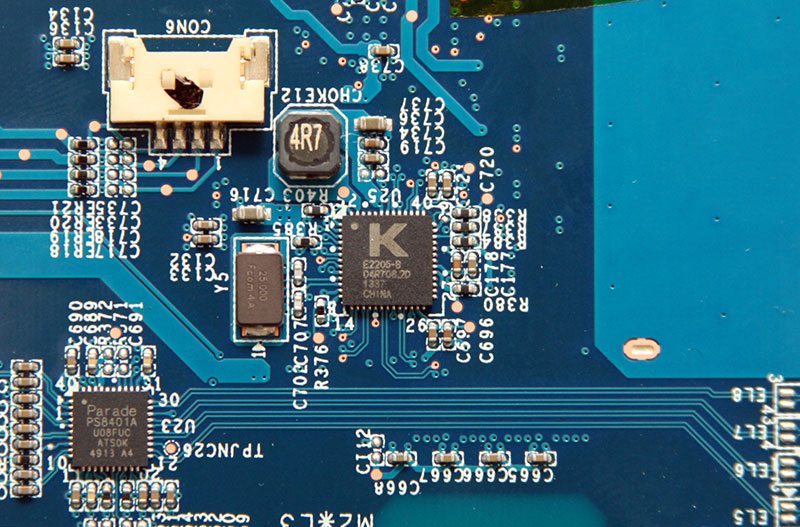
Although this is not a component that I would normally pay attention to, it’s worth noting it once in a while. If we refer back to the previous page and in particular the display outputs, you will see that there are only two display connections, and when the system supports three external panels, one of the ports has to drive multiple panels.
When driving multiple displays through a single output, having a strong signal is fundamental and this is where this chip comes into play. The Parade PS8330 DP1.2 repeater is simply a signal cleanser, equalising the output signal between the GPU and the port to restore any loss of signal or noise that may have appeared otherwise. It may not sound like much, but when running at ultra-high resolutions, this can be vital.
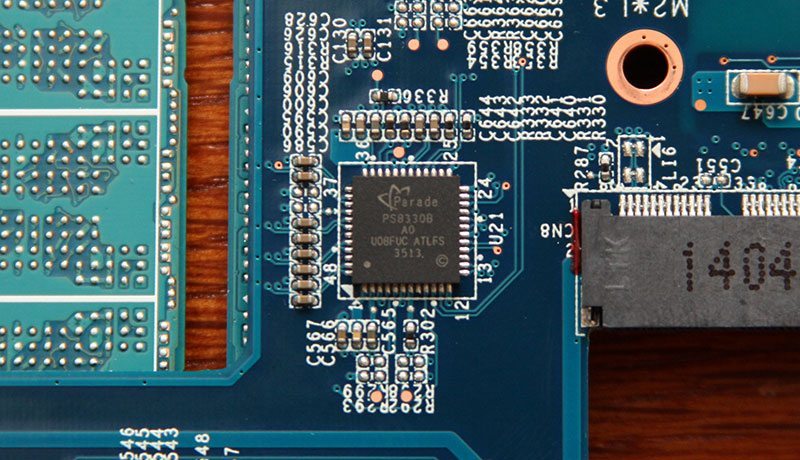
Driving the audio MSI have turned to Realtek for a suitable solution, the RTL892 audio codec has been a popular option for a number of years and with the partnership of the Dynaudio speakers, it still holds a strong position within the market.
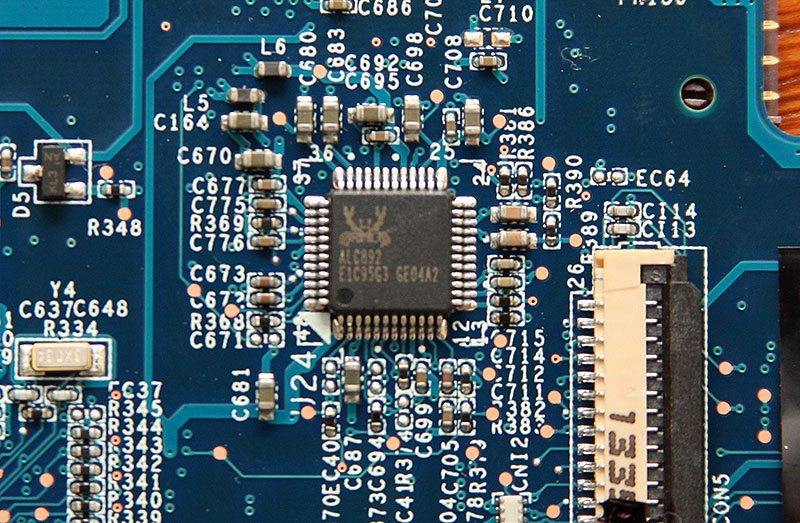
Like the DP repeater, the touch-pad controller is also another component that I don’t really focus on, however it is still nice to take note of what controller vendors use from time to time. The ELAN 33200V-3600 touch pad controller is a common controller to see throughout the market and in particular we find it appearing a in a number of Asus’ Zenbooks.
